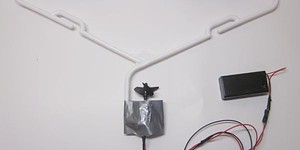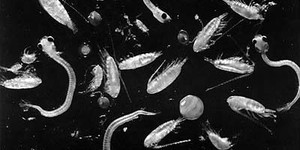Life Below Water, Second Grade Science Projects (7 results)
The United Nations Sustainable Development Goals (UNSDGs) are a blueprint to achieve a better and more sustainable future for all.
These projects explore topics key to Life Below Water: Conserve and sustainably use the oceans, seas and marine resources.
These projects explore topics key to Life Below Water: Conserve and sustainably use the oceans, seas and marine resources.
Science Buddies' second grade science projects are the perfect way for second grade students to have fun exploring science, technology, engineering, and math (STEM). Our second grade projects are written and tested by scientists and are specifically created for use by students in the second grade. Students can choose to follow the science experiment as written or put their own spin on the project.
For a personalized list of science projects, second graders can use the Science Buddies Topic Selection Wizard. The wizard asks students to respond to a series of simple statements and then uses their answers to recommend age-appropriate projects that fit their interests.
Let us help you find a science project that fits your interests, with our Topic Selection Wizard.|
Select a resource
Coding Projects
Sort by
|
What looks pretty, stops flooding, and helps fight pollution? A rain garden! Find out how by building and testing your own miniature rain garden in a plastic bottle.
Read more
Have you ever seen news coverage or other pictures of an oil spill in the ocean and wondered how all of that oil could be cleaned up? Oil spills can devastate wildlife by covering them with oil, and they can damage our precious water resources by contaminating them with oil. Part of the problem of dealing with oil spills is that the oil can be challenging to clean up. In this science project, you will test the absorptivity of different materials (called sorbents) to discover which ones are best…
Read more
New
Can AI understand human language? In the future, AI could aid in emergency interpretive service in the hospital when translators aren't available. But can current AI algorithms understand non-verbal languages like sign language? In this science project, you will test whether AI can learn sign language gestures or phrases to see if it can be used for interpretation.
Read more
The world's oceans are home to the most strange and amazing creatures. What do scientists know about these deep-sea animals and how can they study them easily? One way to learn about these animals in their homes is to use underwater robots. Underwater robots can record data that would be difficult for humans to gather. But what are robots and how are they made? In this robotics engineering project, you will discover what makes up a simple robot and build and test your own underwater robot.
Read more
Have you seen plankton? I am not talking about the evil villain trying to steal the Krabby Patty recipe from Mr. Krab. I am talking about plankton that live in the ocean. In this experiment you can learn how to collect your own plankton samples and see the wonderful diversity in shape and form of planktonic organisms.
Read more
Did you know that when you use fertilizer in your garden, it can eventually reach a lake, stream, or pond? There are many different chemicals present in fertilizers. How will they affect the aquatic organisms in the ecosystem? In this science project you will get to find out!
Read more
New
Have you ever seen a waiter balance an entire tray of drinks without spilling any? How do they do it? Do you think you could build a robot waiter that can do the same thing? In this project, you will learn how to build a self-balancing robotic tray. You can incorporate the auto-leveling tray into one of our many other robotics projects, like the Bluebot or robotic arm.
Read more
Have you ever been to a tide pool during low tide? Some intertidal animals in the low tide zone are left in a tiny pool of water when the tides go out. Other intertidal animals that live in high tide zones may be left to dry out during low tide. How much time does each zone spend out of water during a tidal cycle?
Read more
Baby Beluga may swim in the deep blue sea, but the song does not mention how cold it is out there! Find out in this science project how a bit of blubber can be a useful adaptation when the water is ice cold. Brrrr!
Read more
|













